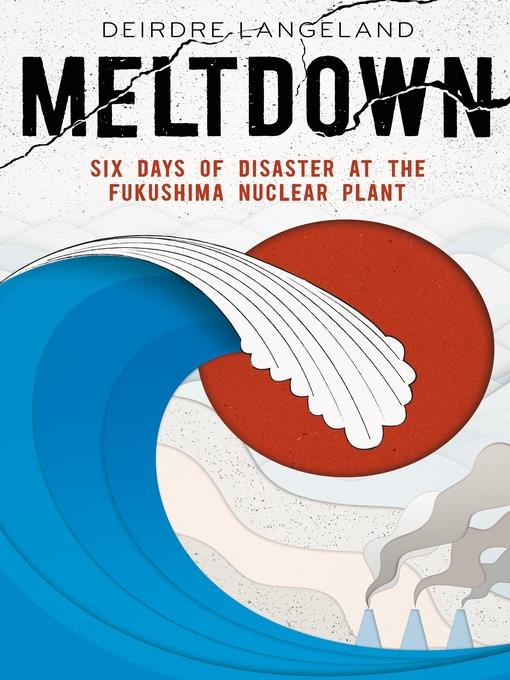
Meltdown: Earthquake, Tsunami, and Nuclear Disaster in Fukushima
فرمت کتاب
ebook
تاریخ انتشار
2021
نویسنده
Deirdre Langelandناشر
Roaring Brook Pressشابک
9781626726994
کتاب های مرتبط
- اطلاعات
- نقد و بررسی
- دیدگاه کاربران
نقد و بررسی

December 15, 2020
Like Three Mile Island and Chernobyl before it, Fukushima is now synonymous with nuclear disaster. On March 11, 2011, the largest earthquake ever measured in Japan occurred off the northeast coast of its largest island, Honshu. It triggered a tsunami with a wall of water 128 feet high. The tsunami damaged the Fukushima Daiichi nuclear power plant, triggering meltdowns in its three active reactors--though the damage was far less severe than Chernobyl's, where radiation emissions were 10 times greater. Langeland's narrative is impressively concise, with accessible explanations for such complicated technical subjects as plate tectonics, seismology, the fission process of nuclear power plants, radiation and radioactivity, the chain of events that led to the meltdown of the reactors, and the aftermath. The trifecta of catastrophic death and devastation is vividly depicted with well-chosen quotes from survivors recounting their experiences. In particular, the dramatic accounts of employees at the plant desperately working to contain the meltdown and of rescue workers scouring the devastation for survivors and evacuating whole communities are riveting. In the aftermath of the disaster, Japan reconsidered using nuclear fission for generating power, but Langeland notes that alternative fuels like coal and natural gas also adversely impact human health and the environment. Ten years after the disaster, the author warns, "it remains unclear how many people will suffer long-term from radiation exposure." A well-researched, sharply written, engrossing account of natural and nuclear disaster. (diagrams, maps, photos, timeline, glossary, notes, bibliography) (Nonfiction. 10-14)
COPYRIGHT(2020) Kirkus Reviews, ALL RIGHTS RESERVED.

January 1, 2021
Gr 6-8-The mechanics and impact of nuclear power generation in Japan are explored in this chronological account of the devastation wrought by the Tohoku earthquake, resultant tsunami, and nuclear meltdown of the Fukushima Daiichi power plant in March 2011. The text features information from databases, books, websites, and media reports. From geological facts to chemistry concepts to technologies, Langeland explains the days-long series of catastrophic events that sparked the nuclear power plant meltdown. Labeled diagrams and photographs enhance the thorough presentation of facts. The clear scientific information is of encyclopedic quality, and an insightful concluding chapter shares lessons learned from these disasters. The survivors' accounts add a much-needed sense of context to the enormous amount of information but appear at irregular intervals, which dilute the opportunity for a stronger emotive connection for readers. An extensive bibliography, a glossary, a time line, and an index are included. VERDICT An in-depth, scientific approach to explain the disastrous 2011 Tohoku earthquake, deadly tsunami, and tragic nuclear meltdown of the Fukushima Daiichi nuclear power plant in Japan.-Rachel Mulligan, Pennsylvania State Univ.
Copyright 2021 School Library Journal, LLC Used with permission.

January 1, 2021
Grades 6-8 The six chapters in this eye-opening, often tensely recounted true story map the meltdown of Japan's Fukushima nuclear reactor following the devastating 9.1-magnitude earthquake and the resulting tsunami on March 11, 2011. Along with survivors' personal stories, the book reveals the science behind the deadly earthquake and tsunami, an explanation of how a nuclear power plant works, and radiation's effect on humans. It describes how the heroic power plant workers, called the Fukushima 50 by the media, risked their lives to try to prevent further meltdown. Readers learn of monuments erected to commemorate the dead, including an old nonworking phone booth on a hillside where people go to talk to their lost family members. Today, 52,000 people remain displaced by the event, and the mistakes made and the long-lasting effects of the disaster are acknowledged. This eminently readable, well-sourced book, which is supplemented by maps and color photos, offers a message of resilience and will appeal to readers interested in disasters and the science behind them.
COPYRIGHT(2021) Booklist, ALL RIGHTS RESERVED.

























دیدگاه کاربران